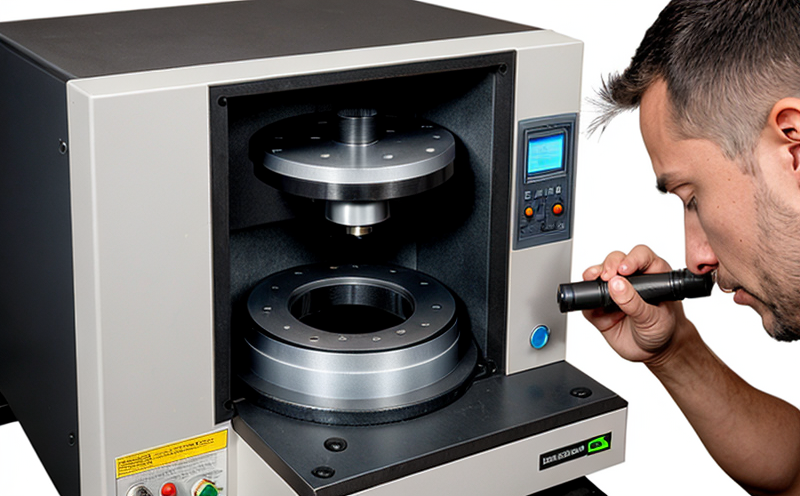ISO 4499-2 Metallographic Determination of Hardmetal Grain Size
The ISO 4499 series provides a standardized method for determining grain size in hardmetals, which are composite materials composed primarily of tungsten carbide (WC), cobalt (Co), and other metallic phases. This service is crucial for quality control, ensuring consistency in the manufacturing process and meeting stringent industry standards.
The ISO 4499-2 standard specifically focuses on the microstructure analysis of hardmetals using metallographic techniques. The process involves several key steps: specimen preparation, examination under a microscope, and classification according to predefined criteria. Specimen preparation is critical for accurate results; it requires precise grinding, polishing, and etching procedures. The choice of etchant (such as Nital or other approved solutions) significantly affects the visibility of grain boundaries.
The examination step involves using a high-powered optical microscope to observe the microstructure. Experienced technicians play a vital role in interpreting the images correctly. Once the grains are identified, they are categorized into sizes according to the standard's grading system. This classification helps in assessing the performance and reliability of hardmetal components, which can vary widely depending on their intended application.
The acceptance criteria for grain size determination under ISO 4499-2 are stringent and precise. Grains must be observed within a defined field of view, typically a circle with a diameter of approximately 1 mm. The standard specifies the number of grains to be counted in this area, which is then used to calculate the average grain size. This method ensures consistency across different laboratories and manufacturers.
The significance of this service extends beyond mere quality assurance; it directly impacts product performance and durability. In industries such as aerospace, automotive, and mining, where high-stress components are common, understanding the grain structure is essential for optimizing material properties. By adhering to ISO 4499-2, manufacturers can ensure that their products meet or exceed the required specifications, enhancing reliability and longevity.
Customer impact and satisfaction are paramount in this service. Regular audits of our facilities against international standards like ISO 4499 demonstrate our commitment to excellence. This not only ensures compliance but also builds trust with clients who rely on us for critical testing services. Our team of experts provides detailed reports that help customers make informed decisions about their materials and processes.
- Ensures compliance with international standards
- Promotes consistent product quality across batches
- Aids in identifying potential issues early in the manufacturing process
- Facilitates continuous improvement through detailed analysis
- Simplifies regulatory compliance for various industries
In conclusion, ISO 4499-2 metallographic determination of hardmetal grain size is a critical service that supports the integrity and reliability of hardmetal components. By leveraging this standard, manufacturers can enhance their products' performance while maintaining high levels of quality and consistency.
Quality and Reliability Assurance
The ISO 4499-2 standard is integral to our commitment to delivering accurate and reliable results in metallographic analysis. Our laboratory adheres strictly to this international guideline, ensuring that every test conducted meets the highest standards of precision and reproducibility.
Our quality management system is designed to support these goals through rigorous calibration and maintenance programs for all equipment used in grain size determination. This includes periodic verification of microscopes, etchants, and other consumables against specified tolerances defined by ISO 4499-2. We also maintain detailed records of all tests performed, which are accessible to clients upon request.
Reliability assurance is achieved through extensive training programs for our technicians. These sessions focus on the latest techniques in specimen preparation, examination methods, and interpretation of results according to ISO standards. By keeping abreast of advancements in this field, we ensure that our methods remain state-of-the-art and relevant.
Clients benefit from these efforts by receiving highly accurate grain size determinations that contribute significantly to their overall quality assurance programs. Our reports provide not only the required data but also insights into potential areas for improvement, helping clients stay ahead of industry trends and challenges.
Use Cases and Application Examples
The application of ISO 4499-2 grain size determination is extensive across multiple sectors, including aerospace, automotive, mining, and manufacturing industries. In aerospace, for instance, the durability of cutting tools made from hardmetals must withstand harsh environments. Accurate grain size analysis ensures that these tools perform optimally under extreme conditions.
In the automotive sector, the selection of appropriate grades of hardmetal is vital for gears and bearings where high precision and longevity are required. By adhering to ISO 4499-2 standards, manufacturers can ensure that their components meet or exceed industry benchmarks.
For mining operations, where heavy machinery is subjected to constant stress and wear, understanding the grain structure of hardmetal parts helps in optimizing material properties for better performance and longer service life. This knowledge also aids in reducing maintenance costs and extending equipment lifespan.
The manufacturing industry benefits greatly from this service as well. The ability to consistently produce high-quality hardmetals enhances product reliability and customer satisfaction, leading to increased market competitiveness.





